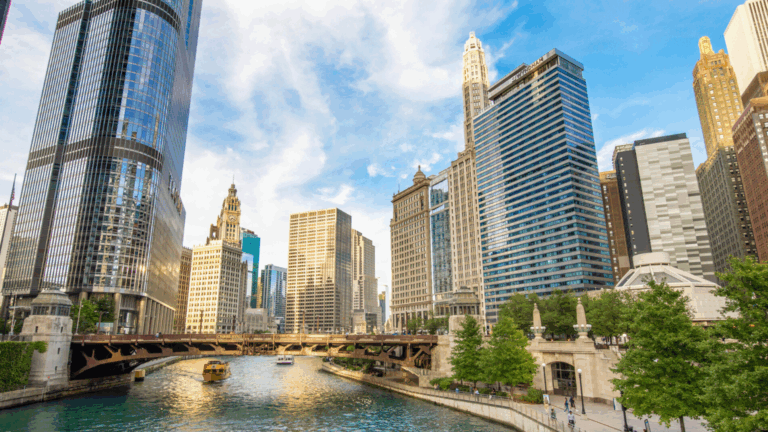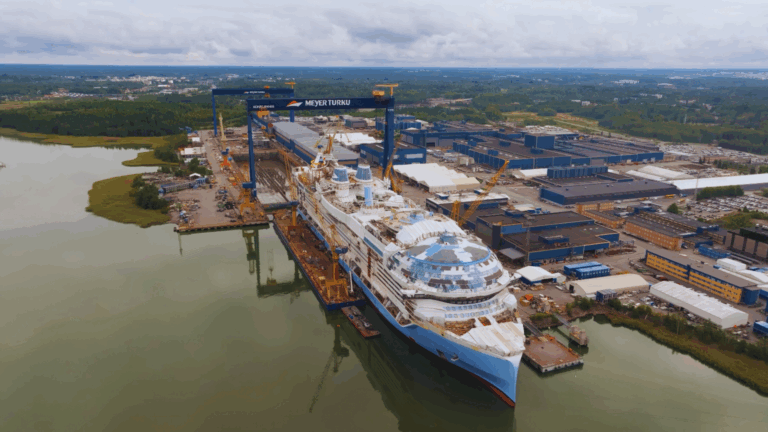Americans are avoiding these 20 locations and here’s why

From overcrowded tourist traps to cities with skyrocketing crime rates, certain destinations are seeing a notable dip in American visitors. It’s not just about the lack of appeal; safety concerns, environmental issues, and even ethical considerations are steering travelers elsewhere. This list dives into the 20 places Americans are currently giving a wide berth and the compelling reasons behind these choices.
1. Death Valley, California (Intense heat waves are no joke)

Death Valley earns its ominous name by recording some of the highest temperatures on the planet. Visitors are increasingly skipping this desert locale due to the extreme heat, which can surpass 120°F in summer, posing serious health risks. The lack of water sources and shade makes it a less appealing option for hikers and campers. Climate change is exacerbating these conditions, leading to even fewer tourists willing to brave the scorching temperatures. Those searching for outdoor adventures are opting for cooler, safer national parks.
2. San Francisco, California (The tech boom’s downside)

Once known for its iconic Golden Gate Bridge and vibrant culture, San Francisco is now often bypassed by travelers due to skyrocketing living costs and visible homelessness issues exacerbated by the tech industry boom. The city’s charm is overshadowed by concerns over safety and cleanliness in certain areas, deterring families and solo travelers alike. While still rich in attractions and beauty, the social problems present a complex challenge for visitors. The high expense of accommodations and dining doesn’t help its case. Many Americans are choosing more affordable and less troubled destinations for their urban getaways.
3. Venice, Italy (Sinking under the weight of tourism)

While not in America, Venice’s plight resonates globally, leading many from the States to reconsider their travel plans. The city’s struggle with overtourism has reached critical levels, contributing to environmental degradation and the displacement of local communities. Additionally, the infrastructure is under immense strain, struggling to support the millions of tourists that flock annually. The threat of Venice literally sinking, coupled with efforts to preserve its charm, has sparked ethical travel considerations. Americans conscious of their travel impact are increasingly skipping Venice for less crowded Italian gems.
4. Hollywood, California (Far from the glamorous portrayal)

The allure of Hollywood’s entertainment industry is losing its sheen for many Americans, as the reality of visiting often doesn’t match the glamorous image portrayed on screen. The area is grappling with congestion, high living costs, and a noticeable homelessness crisis that can be jarring for visitors. Tourist hotspots like the Hollywood Walk of Fame have become overcrowded and lose their appeal amidst the urban challenges. Moreover, locals often find the entertainment-focused tours and attractions lacking in authenticity. As a result, travelers are seeking more genuine and less commercialized experiences elsewhere in California.
5. Miami Beach, Florida (Battling against rising seas)

Miami Beach’s picturesque shores are facing an existential threat from climate change, with rising sea levels leading to frequent flooding. This environmental issue, combined with concerns about hurricanes, is making travelers think twice. The city’s efforts to combat these challenges, including installing pumps and raising street levels, have yet to dispel visitors’ apprehensions fully. Moreover, the party-centric culture and expensive lifestyle are not everyone’s cup of tea, leading to a preference for quieter, more sustainable beach destinations. Americans concerned about their carbon footprint are increasingly avoiding Miami Beach in favor of eco-friendlier options.
6. Las Vegas, Nevada (The hangover of excess)

Las Vegas’ reputation as a playground for adults is getting a bit tarnished, with more Americans skipping the city to avoid its atmosphere of excess. The constant push towards gambling, partying, and overindulgence doesn’t align with the growing trend towards health and wellness. Additionally, the city’s environmental impact, including high water usage in the desert, raises sustainability concerns. Families and those seeking more culturally enriching experiences are turning their backs on Vegas. The rise of online entertainment options is also keeping potential visitors at home, choosing virtual experiences over the neon lights.
7. Mount Everest, Nepal (The cost of overcrowding)

Mount Everest is witnessing a decline in interest from American adventurers due to overcrowding and the ethical dilemmas it presents. The once pristine trekking routes are now littered with waste, and the risk of traffic jams at high altitudes has led to deadly consequences. The commercialization of expeditions has stripped some of the majesty from the experience, making it less appealing to true adventure seekers. Concerns over the exploitation of local Sherpas and the environmental impact of expeditions are also deterring climbers. Many are opting for less crowded, more sustainable mountain experiences elsewhere.
8. Beijing, China (The smog that blankets history)

Beijing’s rich historical tapestry is increasingly hidden behind layers of smog, leading many Americans to cross it off their travel lists. The city’s air quality issues, due to pollution, pose significant health risks, especially for travelers with respiratory conditions. While the Chinese government is taking steps to address the problem, the visible pollution detracts from the enjoyment of Beijing’s ancient sites. The political climate and concerns over human rights also add layers of complexity for potential visitors. As a result, travelers keen on exploring Asian cultures are turning to destinations with clearer skies and less contentious political environments.
9. The Dead Sea, Israel and Jordan (A shrinking natural wonder)

The Dead Sea’s unique landscape is unfortunately diminishing, with water levels dropping at an alarming rate due to diversion of water sources and mineral extraction. This environmental catastrophe is turning away visitors who once flocked to float in its buoyant waters and slather on its mineral-rich mud. The visible impact of human activity on this natural wonder is a sad sight, prompting questions about sustainability and ethical travel. Additionally, the geopolitical tensions in the region make travel planning unpredictable. People are choosing alternative destinations that offer natural healing properties without the environmental guilt.
10. New Orleans, Louisiana (The shadow of natural disasters)

New Orleans’ vibrant culture and rich history are overshadowed by the ongoing recovery from natural disasters, notably Hurricane Katrina. The city’s struggle with flooding and hurricanes raises concerns about safety and the ethics of disaster tourism. While the resilience of its people is inspiring, the visible scars of destruction can be disheartening for some visitors. The high crime rates in certain areas further complicate the decision to visit. Thus, many Americans are opting to support New Orleans from afar, choosing to contribute to recovery efforts rather than visit in person.
11. Cancun, Mexico (Beyond the beach, trouble brews)

Cancun’s pristine beaches and lively resorts are losing their appeal as concerns over safety and crime in the area grow. Reports of violent incidents and tourist-targeted scams have made headlines, causing travelers to think twice. The city’s struggle with sargassum seaweed washing ashore is another turnoff, affecting the beauty of its beaches and the quality of the water. Additionally, the commercialization and overcrowding of Cancun have led many to seek out more authentic Mexican experiences. As a result, Americans are exploring less known, safer destinations in Mexico that offer both beautiful beaches and rich cultural experiences.
12. Bali, Indonesia (Paradise lost to overtourism)

Bali has long been a dream destination for many, but its reality is now marred by overtourism and environmental degradation. The island’s infrastructure is struggling to cope with the influx, leading to traffic congestion, pollution, and strain on water resources. The charm of its serene beaches and lush landscapes is diminishing under the weight of too many visitors. Efforts to manage the tourist numbers and promote sustainable travel practices are in place, but change is slow. Consequently, travelers in search of tranquil retreats are setting their sights on Indonesia’s less visited islands.
13. Detroit, Michigan (The struggle to bounce back)

Detroit’s rich automotive history and cultural contributions are overshadowed by its economic struggles and high crime rates. Despite efforts to revitalize the city, many areas remain blighted, deterring tourists. The city’s reputation, though improving, still carries the burden of past hardships, making it less attractive as a travel destination. However, there’s a growing curiosity about Detroit’s art scene and urban renewal projects. Yet, until perceptions catch up with reality, many Americans are hesitant to include Detroit on their travel itineraries.
14. Rio de Janeiro, Brazil (The beauty and the crime)

Rio de Janeiro’s stunning beaches and vibrant Carnival are increasingly overshadowed by safety concerns. High crime rates, including theft and violent crimes, have put a damper on its allure as a tourist hotspot. Efforts by local authorities to improve safety have had mixed results, leaving travelers wary. The city’s favelas, while culturally rich, pose significant risks for the uninformed visitor. Consequently, many are opting for safer Brazilian destinations to enjoy the country’s famed beaches and festivities without the worry.
15. The Great Barrier Reef, Australia (A natural wonder in peril)

The Great Barrier Reef is facing unprecedented threats from climate change, leading to coral bleaching and a decline in marine life. This natural wonder’s deterioration is a major concern for environmentally conscious travelers. Efforts to protect and restore the reef are underway, but the visible damage makes the experience less magical for visitors. The Australian government and conservation groups are working hard to combat these issues, but the reef’s future remains uncertain. As a result, some tourists are choosing to avoid contributing to the stress on the ecosystem, seeking alternative destinations to explore marine biodiversity.
16. Pyramids of Giza, Egypt (An ancient marvel with modern woes)

The Pyramids of Giza remain a bucket-list destination for many, but the experience is often marred by aggressive vendors and overcrowding. The commercial atmosphere around these ancient wonders can detract from their majesty and mystique. Concerns about political instability and safety in the region also play into travelers’ decisions. Although the Egyptian government is taking steps to improve the visitor experience and ensure safety, these efforts have yet to fully reassure potential tourists. Many Americans, eager to explore ancient history without the hassle, are turning to other archaeological sites around the world.
17. Atlantic City, New Jersey (The gamble that doesn’t always pay off)

Atlantic City’s allure as a gambling and entertainment hub is waning, with visitors often disappointed by the reality of its faded glamour. The city’s casinos and boardwalk, while iconic, struggle to compete with newer, flashier destinations. Economic difficulties and high crime rates in certain areas further tarnish its appeal. Recent efforts to diversify attractions beyond gambling have had limited success. As a result, travelers looking for a mix of beachside relaxation and entertainment are finding more appealing options elsewhere.
18. Chernobyl, Ukraine (The dark tourism dilemma)

Chernobyl has gained attention as a site of dark tourism, drawing visitors curious about the site of the nuclear disaster. However, the ethical implications of touring a disaster zone, along with safety concerns about lingering radiation, are causing many to reconsider. The area’s eerie atmosphere and tragic history, while fascinating, raise questions about the appropriateness of such visits. Organizations offering tours insist on safety measures, but the potential health risks still deter some. Consequently, the debate over the morality and safety of visiting Chernobyl is leading many to seek out less controversial historical sites.
19. Manila, Philippines (The chaos of urban sprawl)

Manila’s bustling metropolis is often bypassed by travelers seeking the Philippines’ idyllic beaches and natural beauty. The city’s notorious traffic congestion, pollution, and high population density make it a challenging destination for many. While rich in history and culture, Manila’s urban sprawl can be overwhelming, especially for those looking for a relaxing getaway. Efforts to improve infrastructure and reduce pollution are ongoing, but progress is slow. As a result, visitors to the Philippines are increasingly favoring provincial destinations that offer a more tranquil and scenic experience.
20. Myrtle Beach, South Carolina (A vacation hotspot’s hidden issues)

Myrtle Beach’s reputation as a family-friendly vacation destination is being questioned due to rising crime rates and concerns over water quality. The beach town, known for its amusement parks and beautiful coastlines, faces challenges that deter some visitors. Despite its popularity, the area’s issues have led to a reevaluation among potential tourists, especially those with young children. Local authorities are striving to address these concerns, aiming to restore the area’s appeal. However, until perceptions change, many are opting for alternative coastal destinations with a safer, cleaner image.
This article was written by a human and edited with AI Assistance






